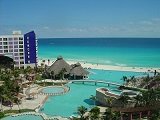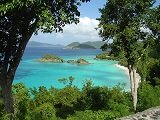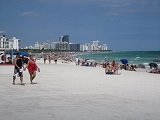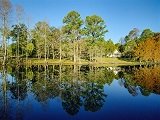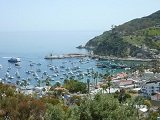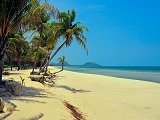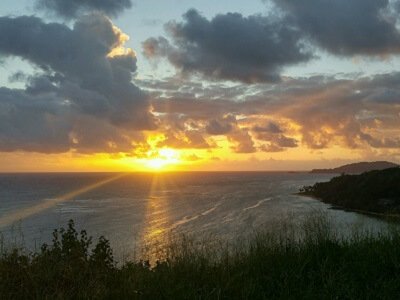- Home
- Costa Rica Webcams
- Poas Volcano
Search this site
Poas Volcano Webcam
Live view from the Poas Volcano webcam in Costa Rica.
This webcam is located on the northern rim of the volcano looking into the crater and acid lake. Frames are updated every 10 seconds. During major weather events, it is possible that the view becomes fogged out.
ALAJUELA PROVINCE WEATHER
About the Poas Volcano
The Poas Volcano is one of Costa Rica's
most iconic natural wonders, attracting visitors from around the world
to witness its stunning crater lake and lush surrounding rainforest.
Located in the Central Valley region just 30 miles north of the capital
San Jose, Poas is an active stratovolcano that reaches an elevation of
8,885 feet.
Poas is the largest active crater in the world,
spanning nearly a mile in diameter. The crater contains a vivid
blue-green acid lake called Laguna Caliente that belches steam and
gases. Poas is one of Costa Rica's most active volcanoes, with frequent
but minor eruptions.
The last major eruption of Poas
Volcano occurred on April 12-14, 2017. A series of explosive eruptions
blasted ash, rocks and gases 9,800 feet into the air. Ash fell on
surrounding communities and authorities closed the national park.
Seismic and volcanic activity continued for several months after the
eruption.
Prior to 2017, Poas also erupted in 1910, 1953, and
2009, although these events were less severe. The 1910 eruption produced
lahars (volcanic mudflows) that damaged agricultural land. The 1953-54
eruption created a new crater lake. Activity in 2009 was characterized
by minor blasts.
Despite the potential hazards, Poas
Volcano National Park is one of Costa Rica's most popular tourist
destinations when volcanic activity is low. A paved road allows visitors
to drive right up to the crater rim, where a visitor center and viewing
platforms offer spectacular vistas on clear days. Hiking trails wind
through the dwarf cloud forest.
Getting to Poas Volcano is
relatively easy. Visitors can drive from San Jose in about an hour, or
take a public bus from the Avenida Segunda terminal. Many hotels and
tour operators in the Central Valley region also offer half-day trips to
the volcano, which is an ideal option for those who prefer to leave the
logistics to someone else.
In addition to Poas, Costa Rica is
home to five other active volcanoes: Turrialba, Irazu, Rincon de la
Vieja, Arenal, and Orosi. Together, these volcanoes form the Central
Volcanic Corridor, which runs roughly northwest to southeast through
central Costa Rica.
Turrialba Volcano, located east of San Jose,
has been Costa Rica's most active volcano in recent years. Major
eruptions in 2014-2017 repeatedly impacted the capital with ash fall,
prompting evacuations and airport closures. Turrialba's summit crater is
currently off-limits to visitors.
Irazu Volcano, situated just
east of Cartago, is Costa Rica's tallest volcano at 11,260 feet. It last
erupted in 1963-65, showering San Jose and Cartago in ash and causing
significant agricultural damage. Today, Irazu is a popular tourist
destination known for its lunar-like crater landscape and green lake.
Rincon
de la Vieja Volcano anchors a remote national park in the northwest
Guanacaste province. It is an active complex of nine contiguous craters,
with minor phreatic eruptions occurring every few years. The park is
noted for its volcanic hot springs, waterfalls, and bubbling mud pots.
Arenal
Volcano, located in the north-central part of the country, is Costa
Rica's most famous volcano. It erupted continuously from 1968 to 2010,
attracting tourists from around the globe to witness its incandescent
lava flows and ash columns. Although Arenal is currently in a resting
phase, the area remains a major hub for hiking, hot springs, and
adventure activities.
Orosi Volcano, the southernmost of Costa
Rica's active volcanoes, is a remote peak that sees very few visitors.
It last erupted in 1888 and today is monitored for signs of renewed
activity. The summit region contains a deep crater lake and several
fumaroles.
Costa Rica is also prone to seismic activity due to
its location at the intersection of the Cocos, Caribbean, and Panama
tectonic plates. The country experiences hundreds of minor earthquakes
each year, although major damaging quakes are less frequent.
One
of the largest earthquakes in Costa Rica's history occurred on April 22,
1991, when a 7.7-magnitude quake struck the Caribbean coast. The
temblor and resulting tsunami caused extensive damage, particularly in
the city of Limon, and claimed 48 lives.
More recently, on
September 5, 2012, a powerful 7.6-magnitude earthquake hit the Nicoya
Peninsula on Costa Rica's Pacific coast. Although the quake caused
widespread power outages and property damage, effective building codes
and emergency response limited casualties to two.
Other notable
earthquakes in Costa Rica include a 6.1-magnitude quake near the capital
in 2009, a 6.2-magnitude quake in the northwest in 2016, and a
6.5-magnitude quake near the Panama border in 2017. Visitors to Costa
Rica should be aware of earthquake safety procedures, such as
identifying safe zones and having an emergency plan.
Despite the
risks associated with volcanic and seismic activity, Costa Rica remains a
top destination for adventurous travelers who appreciate the raw power
and beauty of the Earth's geological forces. With proper precautions and
respect for nature, exploring Costa Rica's volcanoes can be a safe and
unforgettable experience.
Whether you're marveling at the
turquoise waters of Poas' crater lake, hiking through the misty
rainforest of Arenal, or soaking in the hot springs of Rincon de la
Vieja, Costa Rica's volcanoes offer a thrilling glimpse into the heart
of a dynamic and ever-changing planet. For those who love to hike in
tropical rainforests and witness the majesty of the natural world, there
are few better places to do so than in the shadow of Costa Rica's
awe-inspiring volcanoes.
Watch live from the Poas Volcano Webcam.

